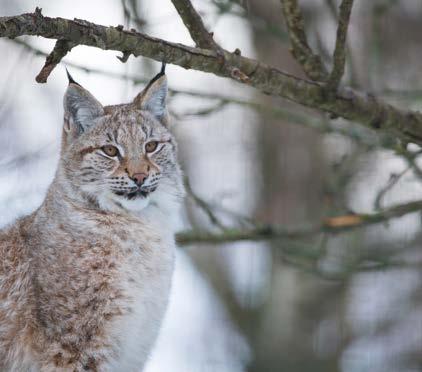The Royal Zoological Society of Scotland


The Royal Zoological Society of Scotland

The Royal Zoological Society of Scotland (RZSS) is a wildlife conservation charity with a bold vision: a world where nature is protected, valued and loved.
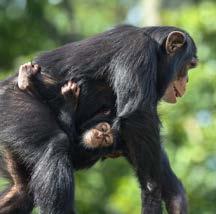

With more than a million species at risk of extinction, our planet’s life support system is in crisis. That is why our new strategy, launched in 2022, includes three ambitious pledges. The first is to reverse the decline of at least 50 species by 2030.
As you will read in this report, we are already making a positive impact on species including addax in the Sahara, giant armadillos in Brazil and pine hoverfly and wildcats in Scotland.
But we cannot achieve our vision alone. Nature needs us to act together. This is why we have also pledged to create deeper connections with nature for more than a million people by 2030. In this report, you can find out about some of the incredible ways we are
forging connections at our gateways to the natural world: Edinburgh Zoo and Highland Wildlife Park.
Our third pledge is to enable more than 100 communities to better protect nature by 2030. Stronger communities have a greater capacity to care for wildlife – and through our incredible zoos and dynamic teams, we are already helping many diverse communities to realise the benefits of being close to nature.
Now is the time to make a difference and thanks to support from many people, it is already happening.
Our mission is to save wildlife and empower people in Scotland and around the world to protect, value and love nature.
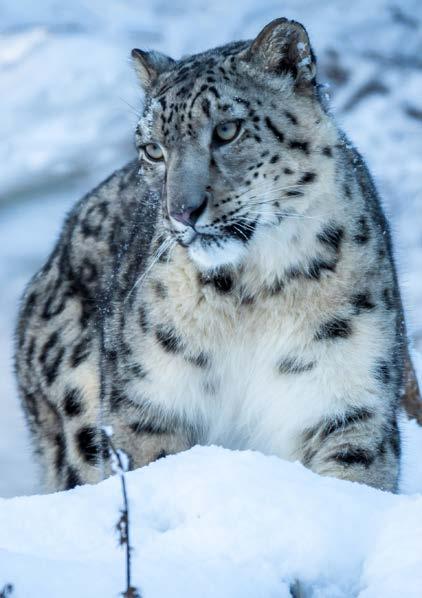
By 2030, working in Scotland and across the world, RZSS will:
CO n SERVATI o N
Reverse the decline of at least 50 species
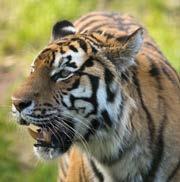

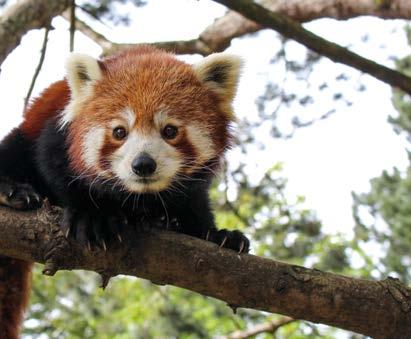
Create stronger connections with nature for more than a million people
COM m UNITY
Enable more than 100 communities to better protect nature
Working in partnership to save wild species

RZSS conservation work extends around the world, from wildcats and pine hoverflies in the Cairngorms National Park to chimpanzees in Uganda and giant anteaters in Brazil
We’re delighted to present a snapshot of our conservation strategy and some of our project highlights of 2022

What is the RZSS approach to species recovery?
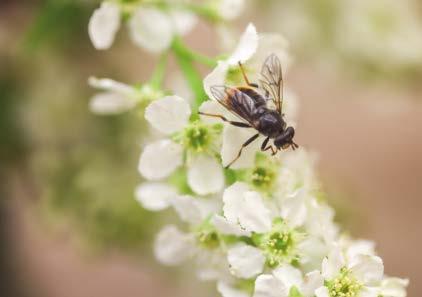
There are many threats that have led to the decline of species, including habitat loss, hunting, climate change, pollution and disease. Recovering a species is not something that can be achieved overnight. Successful species recovery generally requires many people and organisations to pool their expertise and resources. The RZSS approach will always include:
Working in partnership and alongside local communities
A long-term, joined-up commitment to the process of recovery. Species cannot recover alone without a healthy habitat
Using science and conservation planning to support sound decision-making
These are principles embodied in standards laid out by the global conservation community.
What species will we help?
RZSS pledges to reverse the decline of at least 50 species by 2030.
These will cover a broad range of animals in Scotland and around the world
We will always work in a way that ensures species conservation acts as a positive driver for wider ecosystem restoration and is aligned with the recovery effort for other threatened species sharing the same habitat
We will engage with projects where our unique set of skills is put to best use. These skills include conservation breeding (ex-situ conservation), conservation translocations (for example, reintroductions), applied conservation genetics, veterinary medicine and conservation planning
We will measure species recovery using a “species recovery curve” approach. This is a tool used by other organisations across the conservation community.
Monitoring and diagnosis
Steps of species recovery involving monitoring and research. These are steps that allow us to diagnose species decline.
Planning and testing the solution
Steps of species recovery involved in identifying the appropriate management action, which allow us to reverse species decline. These include constructing a multi-stakeholder action plan, establishing ex-situ insurance and conservation breeding for release populations (if appropriate), and trialling management action in the wild (in-situ action). These steps form an important part of the International Union for Conservation of Nature (IUCN) “One Plan” species recovery approach.
Full deployment of the solution

Steps of species recovery involved in replicating actions across the initial wild trial site, measuring success against population, range and, where appropriate, genetic diversity targets.
Sustainable management
Steps of recovery involving increasingly minimal intervention until a species is fully recovered.
RZSS pledges to:
Establish targets for recovery from the outset and review our progress regularly with the help of external experts.
The species recovery curve we will use is a version of the one utilised by the RSPB, Cairngorms National Park Authority and Species on the Edge, which is also applied for the implementation of the Cairngorms National Park Plan. The curve incorporates specific steps that RZSS uses in the management of threatened species,
including planning conservation action, breeding and managing genetic diversity in the process of species recovery. This aligns with the IUCN approach to conservation planning, including the ”One Plan” approach and the “Assess-Plan-Act” cycle. It reflects the approach to the preservation of the three pillars of biodiversity – ecosystem, species and genes – in the post-2020 biodiversity framework. More details on the approach will be shared soon.
We will measure species recovery via these steps:
12,000 individuals have been released into the wild since 2021
Postrelease monitoring took place at all three release sites
Critically endangered pine hoverflies have been shown to be breeding successfully in new populations around the Cairngorms National Park, thanks to conservation efforts by RZSS and the Rare Invertebrates in the Cairngorms (RIC) partnership.

Surveys led by RIC found larvae in previously unoccupied tree stumps, meaning at least some of the pine hoverflies released by RZSS across three sites in October 2021 and March 2022 had completed a full breeding cycle.
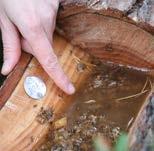
A huge milestone for pine hoverfly conservation in Scotland, we can now be certain that some of the adults found each other and enough food to allow them to mate, lay eggs and produce a new generation at sites where the species had been missing for decades.
These larvae mean we are seeing new populations emerge as a direct result of our pine hoverfly breeding programme and the habitat creation work being done by our partners at RIC and Forestry and Land Scotland.
First evidence of released individuals breeding in the wild
At the Saving Wildcats conservation breeding for release centre, with support from national and international partners, we are preparing young wildcats born in 2022 to enter the wild this year. These wildcats will be the first of their kind to be released into the wild in Britain.
There are more than 30 wildcats in the centre, which sits away from public view in Highland Wildlife Park. Breeding pairs of wildcats from the UK conservation breeding programme managed by RZSS are among the population, as well as their offspring from 2022.

The hope is to release a minimum of 20 wildcats annually to start bringing Scotland’s wildcat population back from the brink of extinction. The wildcats will be moved under licence to carefully selected areas in the Cairngorms Connect landscape, which provides a suitable mix of habitats and potential prey for the species. After release, the wildcats will be monitored using GPS collars.

In 2022, the project gave more than 60 talks to community groups in Scotland
The kittens born in 2022 as part of the Saving Wildcats project will be the first of their kind to be released into the wild in Scotland
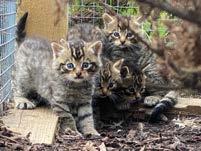
Since the start of the project, more than 1.2 million camera trap images have been analysed to support baseline ecological surveys at the release site
www.savingwildcats.org.uk
The Scottish Wildcats project is a collaboration between RZSS and: NatureScot | Forestry and Land Scotland | Cairngorms National Park Authority | Nordens Ark and Junta de Andalucía Saving Wildcats is supported by: the EU’s LIFE programme | A wide range of funders – seeThe RZSS WildGenes team are working with partners to help secure a future for the addax, an antelope that once roamed Africa’s Sahara Desert. Our scientists have undertaken the first global assessment of genetic diversity for the critically endangered antelope.


Studies provide a unique insight into the last remaining wild population, which has fewer than 100 individuals left due to threats from climate change, hunting and habitat loss, as well as captive populations and those already reintroduced to Tunisia. We found the genetic diversity in the last wild population was greater and different to that in captivity, highlighting the importance of both these populations for conserving addax.
The genetic information identified through our work has now been used to select individuals to act as founders of a reintroduction project in Chad.
10
wild, reintroduced and captive populations examined
individuals tested prior to release in Chad
78 samples analysed
456

By sharing knowledge, the RZSS WildGenes Lab is helping to build capacity and expertise in other countries that need it. In Cambodia, we are using our skills to help conserve endangered crocodiles and elephants.
With Fauna & Flora International, the World Wide Fund for Nature and the Wildlife Conservation Society, the RZSS WildGenes team have been establishing estimates for numbers of wild Asian elephants in three protected areas in Cambodia. Field teams send dung samples to the Royal University of Phnom Penh (RUPP), where DNA is extracted to obtain a genetic fingerprnt.
The RZSS WildGenes lab has worked with the RUPP to train university staff in genetic laboratory work and data analysis. The Cambodian lab is generating genetic data that’s feeding directly into
existing conservation efforts. In the longer term, they will become an independent facility with the expertise to tackle further conservation priorities.
Using protocols developed at Edinburgh Zoo, lab technicians can also run a genetic test to identify critically endangered Siamese crocodiles so individuals can be selected for release.
The only zoo-based conservation genetics laboratory of its kind in the UK, RZSS WildGenes contributes to a wide range of conservation projects.
3
wild Asian elephant populations surveyed since 2020
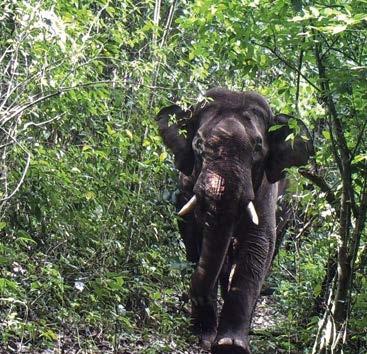
231 students trained in 2022
Siamese crocodile samples tested since 2020
9
The community firefighting brigade was expanded to 15 ranches covering 1,500km2 of the Pantanal to protect the area’s wildlife from wildfires
Giant armadillos were monitored by 156 camera traps across three locations: 35 in the Pantanal, 56 in the Atlantic Forest and 65 in the Cerrado

RZSS have been supporting the Wild Animal Conservation Institute (ICAS) in Brazil since 2010 to help understand and protect giant armadillos and giant anteaters.
ICAS’s first field site was in the Pantanal, the world’s largest tropical wetland, where the organisation’s founder, Dr Arnaud Desbiez, set up camera traps to learn more about the lives of giant armadillos. Fast forward 13 years and the work of ICAS now covers three ecosystems: the Pantanal, the Cerrado and the Atlantic Forest, and employs more thans 20 people.
ICAS’s work with giant armadillos has gone from strength to strength, providing key biological and ecological information about

10 male, eight female and 12 juvenile giant anteaters were monitored via GPS collars
these mysterious giants, and what they need to survive and thrive.
Continued funding from RZSS has also enabled ICAS to expand into working with giant anteaters via its Anteaters and Highways project, aimed at reducing the number of giant anteaters (and other species) killed in vehicle collisions on Brazil’s rapidly expanding highway network.
Most importantly, ICAS understands that conservation is about people. The organisation has founded several initiatives aimed at reducing human wildlife conflict such as its Armadillos and Honey project and helping landowners preserve the habitats they manage, for example, training community firefighters in the Pantanal.

At Edinburgh Zoo and Highland Wildlife Park we welcome hundreds of thousands of visitors every year. Every visit creates an opportunity for a stronger connection with animals and the natural world visitors to Edinburgh Zoo: our highest since 2015
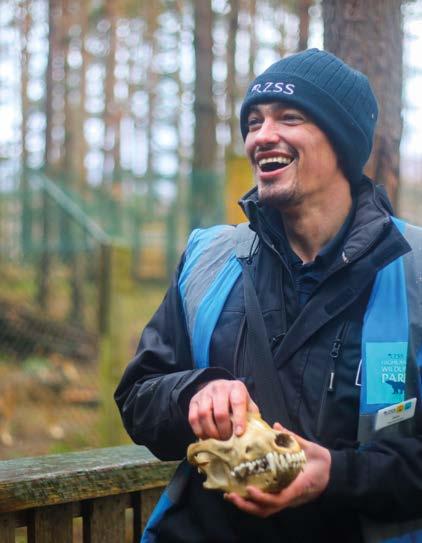
581,963 visitors to Highland Wildlife Park: the second busiest year ever
151,227
39,480
48,400 members
increase in followers of our social media channels
£1.2m
fundraised income for unrestricted projects

£1.6m
fundraised income for restricted projects
Raised with support from many people through:
Individual donations, major gifts and RZSS Patrons

Funds raised by players of People’s Postcode Lottery and awarded by the Planet Trust Grants, trusts and foundations
Corporate partners and sponsorship
Gifts in Wills
Note: all figures are for 2022
Free art trail was a hit: More than 40 eight-foot-tall giraffe sculptures appeared on the streets of Edinburgh in our acclaimed Giraffe About Town trail
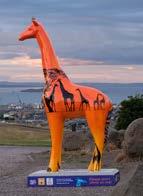

Created in partnership with Wild in Art, the art trail helped the city recover after the pandemic and raised funds for our work
80%
of participants said the trail made them walk more

£4.5m
gross economic impact to Edinburgh
24 schools and six community groups decorated a “wee herd” of four-foot-tall giraffes. “It really engaged the children with a new project and got them excited about conservation,” said a teacher from Preston Street Primary School. Nearly 6,000 users registered to use the app
More than 29 million steps taken
49%
of participants were more likely to visit Edinburgh Zoo in the next year
ZOOdle reached more than 75,000 households and received more than 935,000 page views. It was recognised by the British and Irish Association of Zoos and Aquariums (BIAZA) with a Gold Education Award.
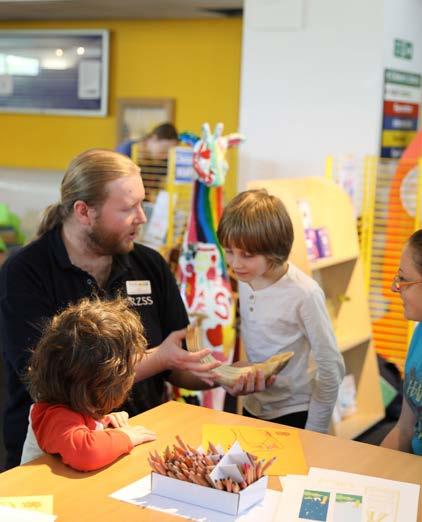
RZSS supported BIAZA and European Association of Zoos and Aquaria (EAZA) collections in learning technology knowledge and skills. This resulted in our involvement in the World Association of Zoos and Aquariums (WAZA) 21+ campaign and delivering a one-day workshop at the EAZA educators conference.
32,394
learners at Edinburgh Zoo and Highland Wildlife Park
Summer schools, summer CAT and science summer school were fully booked after cancelling/adapting during 2020 and 2021. It was fantastic to see so many children and young people engaged with nature in a positive, fun and experiential way.
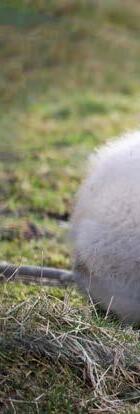
Brodie the polar bear cub received 873 media mentions in 2022
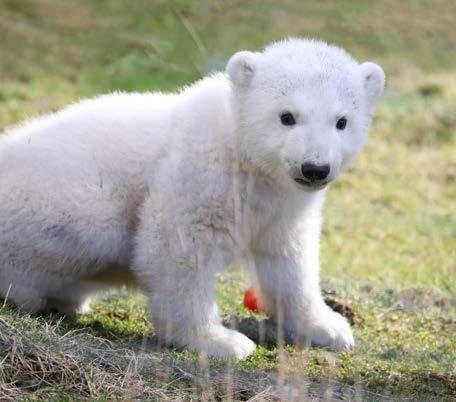

The RZSS Beyond the Panda educational programme gives pupils the opportunity to learn about China, its culture, language, geography, giant pandas and other wildlife.
In 2022, 6,064 learners took part virtually and in-person through outreach visits. The language-linked project has extended to other animals in RZSS conservation projects and breeding programmes. These provide resources and outreach for upper primary level and enable work experience for S4 to S6 students.
“We have been working on climate problems over the past year. The connection with the problems the giant panda has been facing has given the children a better focus.”
The total number of plays across the Edinburgh Zoo webcams was 6,541,929 in 2022
There are more children learning in non-traditional ways and to support this we have continued to focus on outdoor learning.
The RZSS Wild Learning programme has developed and grown, supporting those in home schooling and flexible schooling environments. Flexible pathway sessions, focusing on child-led experiences outdoors in nature, continue to engage with children from the local primary school and now reach children across the council area.
Teacher
TalkTalk funded a travel pilot for schools where cost would be a barrier to attending a learning workshop at the zoo.
3,327
RZSS launched a new members’ magazine
We are committed to: Enhancing our visitors’ experience in our zoos by making sure our team has the best training to deliver a great service
Updating facilities to make sites as inclusive and accessible as possible Developing enclosures and interpretation to encourage curiosity and imagination, through exploration and discovery for a truly engaging visitor journey
Through teacher feedback using the Inclusion of Nature in Self scale, (INS, Schultz, 2021), the data supports an average improvement in nature connectedness of 1.8 scale points. We are showing that our sessions are supporting greater connections with nature – championing our vision to create a world where nature is protected, valued and loved.
hours of roving engagement from discovery rangers
57,633
4,000 animal experiences
visitor engagements at Edinburgh Zoo from 1,700 discovery sessions
RZSS re-established a link with Edinburgh Council, developing and delivering an adult education programme at Edinburgh Zoo.

In 2022, RZSS won a clutch of awards for our work in science, conservation, animal care, education, promotion and engagement in Scotland and around the world.
People’s Choice Award at the Scottish Charity Awards
Visitor Attraction Award for Edinburgh Zoo at the Forth Awards
Five gold, one silver and two bronze prizes at the British and Irish Association of Zoos and Aquariums (BIAZA) Awards

Our Zoo to You programme won gold for our education team
RZSS’s Your Zoo Needs You campaign won the BIAZA PR, marketing, digital and events category
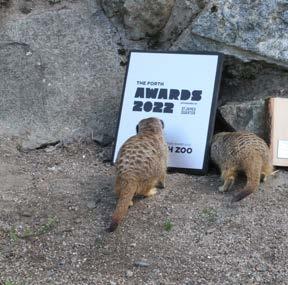
We were awarded for our work with: The Scottish Beavers Reinforcement Project Conservation genetics capacity building in Cambodia Conservation research for the Saving Wildcats partnership project
The RZSS vet team received an award for their innovative work monitoring diabetes in one of Edinburgh Zoo’s giant anteaters


Bringing people together

The unique resources of our zoos and our ability to build stronger connections between animals and people can drive improved individual wellbeing and strengthen communities
After attending a discovery programme with rangers, visitors experienced increased connectivity to nature, feelings of care and concern for animals and ecosystems, and increased affinity towards RZSS because of the work we do. This creates increased capacity for longterm conservation as we become the best-practice model for the larger professional community.
In 2022, we delivered:
4,000 roving hours
225,883 interactions with visitors in our sloth house

17 types of sessions
21 different animal talks
13 unique tours Rangers hosted more than 1,700 discovery sessions, impacting more than 57,000 visitors in 2022

We supported more than 100 community groups
Over 18 months, we have reached more than 6,000 people who would typically experience barriers to nature
Outreach sessions grew the presence and awareness of RZSS as a hub in local communities. Workshops and sessions increased options for community sessions, while new key partnerships boosted the opportunities for multitouchpoint and long-term engagement.

641
discovery passes were redeemed
By providing access to nature, we hope to play our part in helping refugee communities – many of whom have lost loved ones and experienced severe trauma – take some of the first steps towards recovery.
Working with Volunteer Edinburgh and Dnipro Kids, we offered free visits to Edinburgh Zoo to more than 3,800 refugees in 2022, predominantly from Ukraine and Afghanistan. In many instances, we also provided food and shop vouchers free of charge. We supported this work by growing our community team with support from several funding partners.
A nature and curriculum-based programme has been developed at Edinburgh Children’s Hospital Charity, which is delivered to children in hospital by our discovery and community officers. Families and patients have the chance to connect with animals and nature in an interactive and specially adapted way.

Morning drop-in sessions are held in the hospital’s community space for families to enjoy time together. In the afternoon sessions, our community officers go to the wards where they have one-to-one time with children who are unable to leave their rooms, wards or beds. The partnership includes free respite visits for parents and guardians to take time away from the hospital to enjoy nature at Edinburgh Zoo.
Into the Zoo is a pilot programme in partnership with Cyrenians Key 2 Work For six weeks, young adults visit Edinburgh Zoo to develop skills such as team work, communication, care and empathy to build preparedness for the workforce.
We’re continuing to develop our partnership with Age Scotland
Working with Edinburgh Council, Museum of Scotland and Palace of Holyroodhouse to deliver Friday Friends. This inclusive group is for people with a visual, audio or verbal challenge and offers unique, fun experiences with those who share the same needs
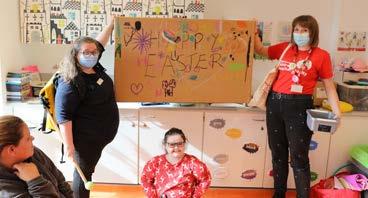
Dementia socials – groups offer an engaging, social experience for people dealing with and supporting those with dementia
We successfully fundraise to increase staffing and resourcing, and to ensure we can continue to deliver free sessions where cost is a barrier to people experiencing nature
We are working with UHI Perth Skill Up and Moving On programmes on activities to help groups apply life skills such as communication, teamwork, following instructions and coping with novel and unexpected situations
Our volunteer recruitment and induction processes are inclusive and supportive. Nature Connections, a twice-monthly programme, has been set up to give individuals a way into volunteering to help build confidence and give them the foundations to be successful going forward. It is perfect for anyone who has not volunteered before or feels they need additional support to get started.
158 active volunteers and 102 new volunteers recruited for Edinburgh Zoo
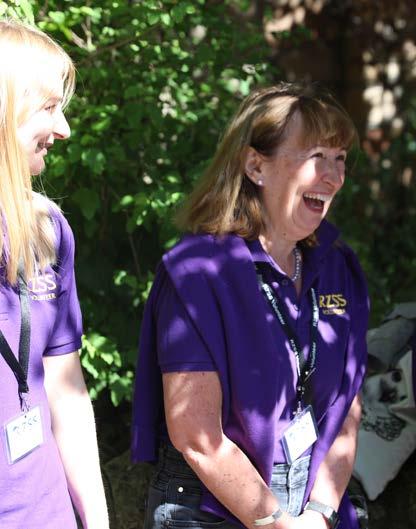
New mentoring and training programme
New reward and retention programme
8,891
volunteer hours from 158 volunteers
Volunteers who spend time at RZSS rate their connection to nature as 4.61 out of five
We recruited a dedicated manager to support and embed accessibility and inclusion across all our programmes, sites and the way in which we work.
Audits of Edinburgh Zoo and Highland Wildlife Park were carried out by organisations including VocalEyes, AccessAble and Autism Scotland to assess what a visit would be like for their members and to help us inform our planning.
We have established an advisory group with experience of supporting communities. Our focus is to maximise inclusion, accessibility and diversity.
This year, we will develop an accessibility and inclusion team with a plan across RZSS that supports all relevant activity.
In 2023, we will increase the number and improve the contents of sensory bags for visitors with additional support needs
The Wildlife Wombles group is the result of a nearly decade-long collaboration with two community groups supporting adults with a range of challenges. What started as a group to support assisted adults who wanted to spend time outdoors and volunteer has resulted in the creation of a meaningful partnership that makes a difference for everyone at Highland Wildlife Park.
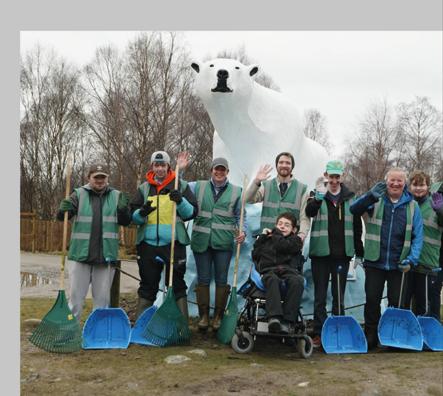
To support mobility, accessibly and inclusion, we now have:
8 scooters
12 single strollers
6 double strollers
3 all-terrain wheelchairs
6 wheelchairs
A new eight-seater electric passenger buggy will provide additional mobility assistance for visitors
Interpretation will immerse visitors in nature by telling stories of Scotland’s wildlife in the past and present – and looking to the future
Scotland’s Wildlife Discovery Centre at Highland Wildlife Park will open in 2024. Transformational to the park, the project will empower audiences to protect, value and love nature at a time when the world faces a biodiversity crisis.
We will enable visitors to support learning through cross-curriculum support programmes including conservation, STEM, outdoor learning, citizen science and community-led partnerships. The project will place visitors at the heart of conservation, providing views of the Saving Wildcats conservation breeding for release centre and beyond to the Cairngorms National Park.
Employing local: Beauly-based Simpson Builders are constructing the discovery, learning and conservation hubs

Funders have generously given more than £5 million towards the development, including:


National Lottery Heritage Fund
NatureScot
Highlands and Islands Enterprise
SSE Renewables, the Hugh Fraser Foundation, the Cairngorms
National Park Authority and players of People’s Postcode Lottery
RZSS would like to extend a huge thank you to all our visitors, members, supporters, sponsors, adopters, donors and partners. You are all part of the RZSS family!

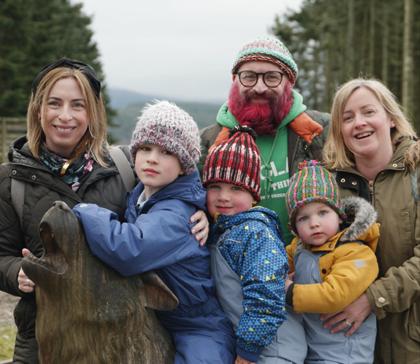
Together we can create a world where nature is protected, valued and loved
